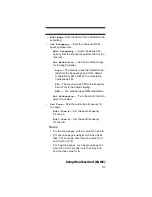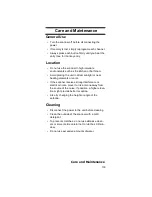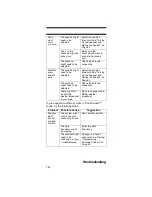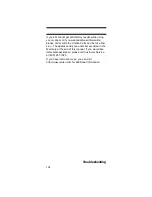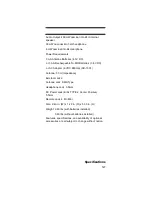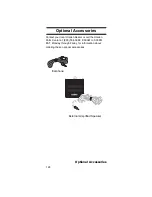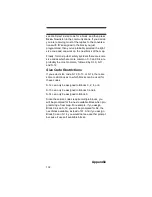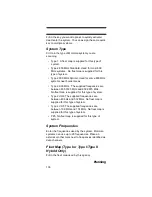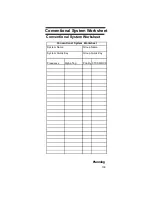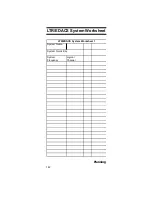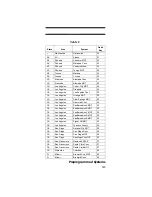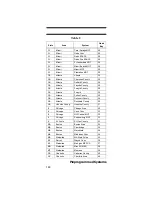
131
Appendix
User Defined Fleet Maps
Type I Programming Information
When a Type I system is designed, the address
information for all the ID’s is divided into 8 equal sized
blocks, numbered 0–7. When you program your
scanner to track a Type I system, you must select a
size code for each of these blocks. When you have
assigned a size code to all 8 blocks, you’ll have
defined the fleet map for the system you are tracking.
Each size code determines the number of fleets, sub-
fleets, and ID’s each block will have. For example, a
size code of S-4 has one fleet, which is divided into 16
separate subfleets, and it has a total of 512 individual
ID’s.
When a block is assigned a size code, the fleet or
fleets created within the block are assigned a Type I
ID. The way these ID’s display on your scanner
depend on the block number and the block’s size
code. When a Type I ID appears, the leftmost digit
represents the block which contains the ID.
The next 2-3 digits identify which fleet is active, and
the last digit(s) identifies the subfleet.
The details concerning how the size codes are
selected by a Type I System designer are highly
dependent on the specific needs of the system’s
users. Some organizations might want many subfleets
with only a few radios each, while another organiza-
tion might want only a few subfleets with many radios
each. Your task is to program your fleet map with the
same size code assignments as the trunked system. If
you do this accurately, you’ll track all the Fleet-Sub-
fleet combinations used by the system. In other words,
you’ll hear complete communications while monitoring
a trunked system.
If you don’t already know the size codes used, you’ll
have to guess at them. But since you don’t have to
figure out all the blocks at once, this isn’t as hard as it
Summary of Contents for UBC396T
Page 3: ...BCD396T OWNER S MANUAL OWNER S MANUAL ...
Page 154: ...152 One Year Limited Warranty ...
Page 155: ...153 One Year Limited Warranty ...

